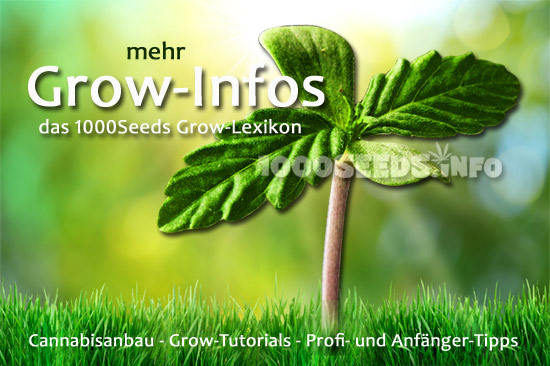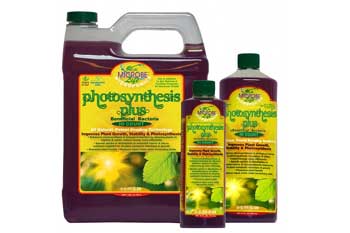All plants need nutrients to live. The supplementary and added special cannabis fertilisers help the cannabis plants to grow to their maximum potential.
There are non-mineral nutrients, which include oxygen, carbon and hydrogen. Plants take them from the water and the air.
Cannabis plants get their mineral nutrients mainly from the soil or the nutrient solution (water). The mineral nutrients are divided into three groups:
- Macronutrients
- Secondary nutrients
- Micronutrient (= trace elements)
The different nutrients can be "mobile" or "immobile". Mobile nutrients are:
- Nitrogen (N)
- Phosphorus (P)
- Potassium (K)
- Magnesium (Mg)
- Zinc (Zn)
The mobile nutrients can be transported to other parts of the plant when needed. In this way, it is possible that the accumulated nitrogen in older leaves is shifted to young leaves and corrects deficiency problems there. Consequently, deficiencies of these nutrients show up first in the older and lower leaves.
Immobile nutrients include:
- Calcium (Ca)
- Boron (B)
- Chlorine (Cl)
- Cobalt (CO)
- Copper (Cu)
- Manganese (Mn)
- Silicon (Si)
- Iron (Fe)
- Molybdenum (Mb)
- Sulphur (S)
The immobile nutrients cannot be transported to other parts of the plant and remain in the older leaves. For this reason, deficiencies in these nutrients first become visible on the new leaves.
Macronutrients
Cannabis plants mainly need the macronutrients nitrogen (N), phosphorus (P) and potassium (K ) for their development. Fertilisers that contain these three elements are also called complete fertilisers. On the bottles of the fertilisers is written, usually as a percentage, how much of each nutrient is contained. The nutrients N-P-K must be constantly available for cannabis plants so that the plant can absorb them and grow quickly.
The secondary nutrients magnesium, sulphur and calcium, are needed by marijuana plants in large quantities. Cannabis plants cultivated quickly under artificial light can usually handle more nutrients than are contained in most common fertilisers from the hardware store. That's why some growers also like to use a high-quality hydroponic fertiliser when growing on soil, which can provide plants with all the important trace elements.
Important: Magnesium, calcium and sulphur may already be present in high amounts in groundwater. This should be taken into account when administering supplementary nutrients.
When growing on soil or even in soilless substrates that have a pH below 7, one cup of fine dolomitic lime per 5 L of planting medium helps to ensure an adequate supply of calcium and magnesium.
This is what you have to keep in mind when fertilising:
- Follow the fertiliser manufacturer's instructions and the corresponding fertilisation schedule. On our site you will find all fertilisation plans for the different fertilisation programmes. Never use more fertiliser or additives than specified, even if you notice a deficiency. A deficiency cannot be compensated for by simply adding more fertiliser all at once. This can cause massive damage to plants.
- Cannabis plants like high levels of nitrogen (N) and moderate amounts of phosphorus (P) and potassium (K) during the growing phase.
- During the flowering period, the cannabis plant needs a higher phosphorus level.
All fertiliser manufacturers offer fertilisers specifically for the growing phase and fertilisers designed for the flowering phase with their programmes. Sometimes also as several components, which are then simply mixed in certain quantities and according to the plan in the respective phase.
Fertilise and water cannabis
- Water and fertilise correctly
- Grow phosphorus
- the optimum pH value
- The EC value in cannabis grow
- Hard water and what to do about it
- the ideal floor
- Organic Cannabis Grow, more than Bio-Grow
- Organic cannabis cultivation: Mixing soil yourself
- Hydroponic systems
- How do I water cannabis automatically?
- Microorganisms in the soil: important helpers
- Increase yields with O2 and CO2
- Cultivation on coco: What do you have to consider? Advantages
- Nettle liquid manure: an excellent natural fertiliser
- Algae as a valuable cannabis fertiliser
All fertilisation schemes
- Advanced Hydroponics Fertiliser Scheme
- Advanced Nutrients Fertiliser Scheme
- Fertilisation scheme BioBizz
- Fertilisation scheme Bio Nova
- Fertilisation scheme CANNA
- Fertiliser scheme General Hydroponics (GHE)
- Fertilisation scheme Grotek
- Fertilisation scheme Guanokalong
- Fertilisation scheme Hesi
- Fertilisation scheme Plagron
- Trabe fertilisation and insecticide scheme
Growshop - Cannabis Fertiliser
- Plagron fertilisation programme
- Fertilisation programme from CANNA
- Fertilisation programme from Microbe Life
- Fertilisation programme from BioBizz
- Fertilisation programme from Hesi
- Guanokalong fertilisation programme
- Fertilisation programme from Bio Nova
- Advanced Nutrients fertiliser programme
- Further fertilisation programmes
- Additions
- Root Booster
- Blossom Booster
- Soil improvement








